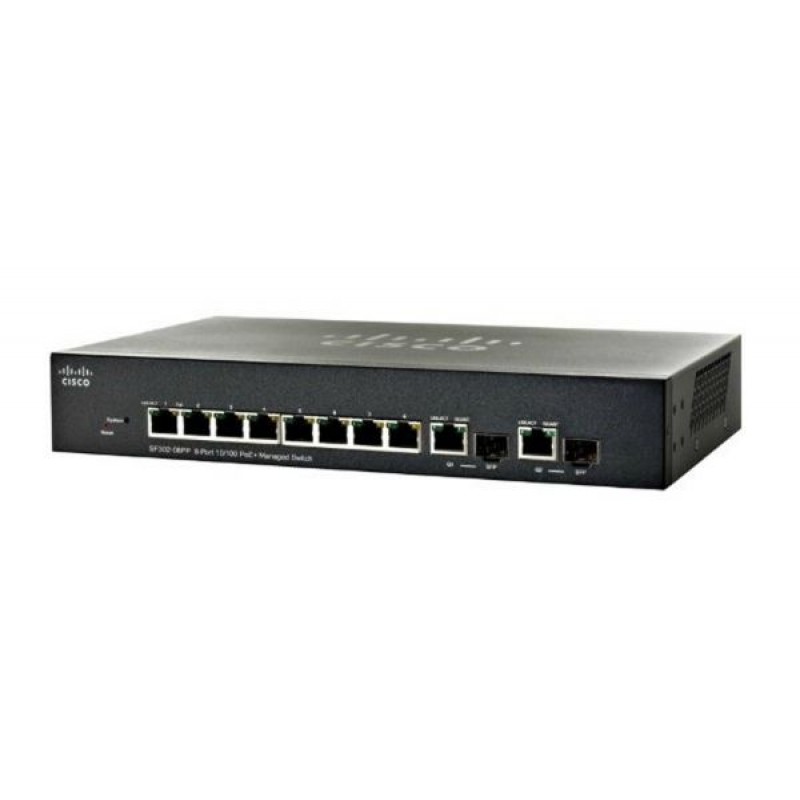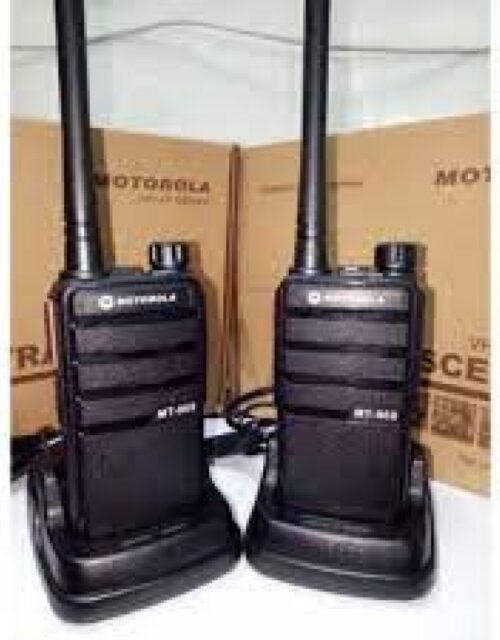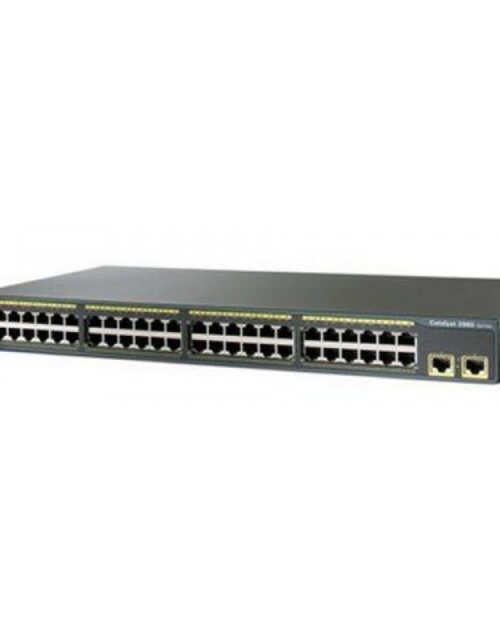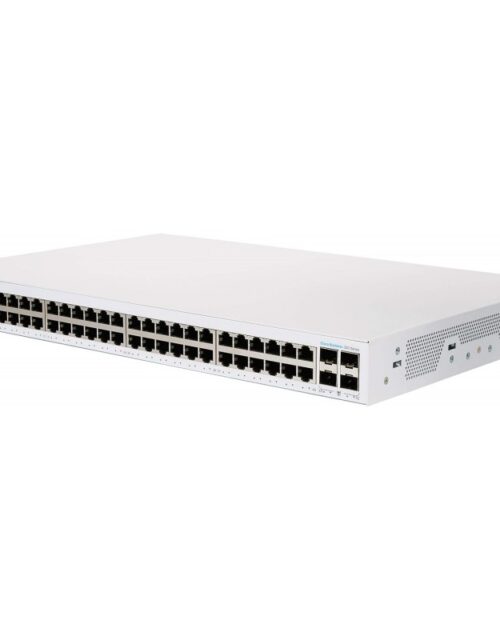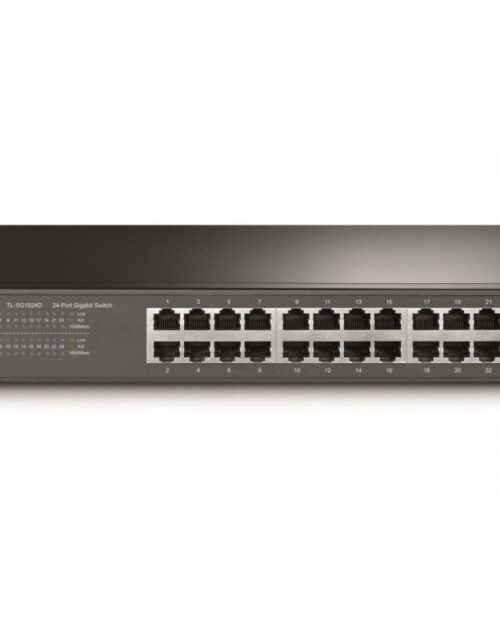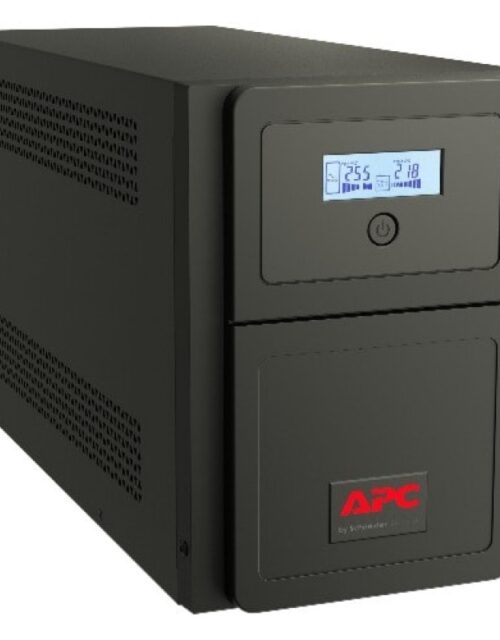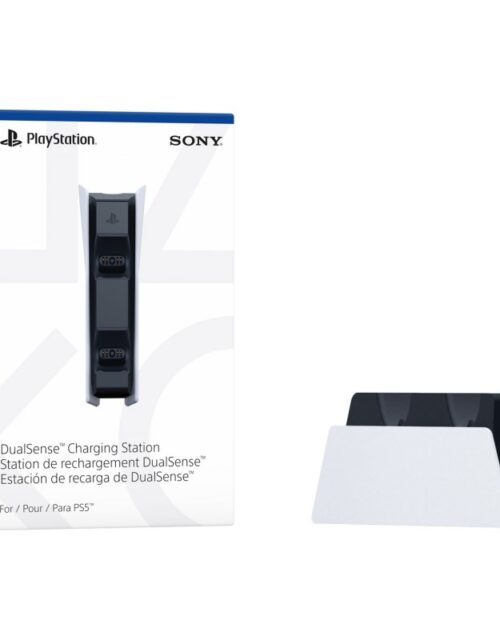PRODUCT DESCRIPTION:
| Performance | Capacity in Mpps (64-byte packets): 4.17 Switching Capacity in Gbps: 5.6 |
| Layer 2 Switching | Spanning Tree Protocol: Standard 802.1d Spanning Tree support Fast convergence using 802.1w (Rapid Spanning Tree), enabled by default Multiple Spanning Tree instances using 802.1sPort Grouping: Support for IEEE 802.3ad Link Aggregation Control Protocol • Up to 8 groups • Up to 8 ports per group with 16 candidate ports for each (dynamic) 802.3ad link aggregation
VLAN: Support for up to 256 VLANs simultaneously (out of 4096 VLAN IDs) Voice VLAN: Voice traffic is automatically assigned to a voice-specific VLAN and treated with appropriate levels of QoS Q-in-Q VLAN: VLANs transparently cross a service provider network while isolating traffic among customers Generic VLAN Registration Protocol/Generic Attribute Registration Protocol: Protocols for automatically propagating and configuring VLANs in a bridged domain Dynamic Host Configuration Protocol Relay at Layer 2: Relay of DHCP traffic to DHCP server in different VLAN. Works with DHCP Option 82 Internet Group Management Protocol Versions 1, 2 and 3 snooping: IGMP limits bandwidth-intensive multicast traffic to only the requesters; supports 256 multicast groups (source-specific multicasting is also supported) IGMP Querier: IGMP querier is used to support a Layer 2 multicast domain of snooping switches in the absence of a multicast router Head-of-Line (HOL) Blocking: HOL blocking prevention |
| Layer 3 | IPv4 Routing: Wirespeed routing of IPv4 packets Up to 32 static routes and up to 32 IP interfacesClassless Inter-Domain Routing: Support for CIDR
DHCP Relay at Layer 3: Relay of DHCP traffic across IP domains User Datagram Protocol Relay: Relay of broadcast information across Layer 3 domains for application discovery or relaying of BootP/DHCP packets |
| Security | Secure Shell Protocol: SSH secures Telnet traffic to and from the switch; SSH v1 and v2 are supported
Secure Sockets Layer: SSL support: Encrypts all HTTPS traffic, allowing highly secure access to the browser-based management GUI in the switch IEEE 802.1X (Authenticator role): RADIUS authentication and accounting, MD5 hash; guest VLAN; unauthenticated VLAN, single/multiple host mode and single/multiple sessions STP Bridge Protocol Data Unit Guard: A security mechanism to protect the network from invalid configurations. Secure Core Technology: Ensures that the switch will receive and process management and protocol traffic no matter how much traffic is received Layer 3 Isolation: Allow/disallow routing between IP subnets or directly connected IP networks Layer 2 Isolation Private VLAN Edge (PVE) with community VLAN: PVE (also known as protected ports) provides Layer 2 isolation between devices in the same VLAN, supports multiple uplinks Port Security: Locks MAC addresses to ports, and limits the number of learned MAC addresses RADIUS/TACACS+: Supports RADIUS and TACACS authentication. Switch functions as a client Storm Control: Broadcast, multicast and unknown unicast DoS Prevention: DoS attack prevention Congestion Avoidance: A TCP congestion avoidance algorithm is required to minimize and prevent global TCP loss synchronization. ACLs: Support for up to 512 rules |
| Quality of Service | Priority Levels: 4 hardware queues
Scheduling: Strict priority and weighted round-robin Class of Service: Port based; 802.1p VLAN priority based; IPv4/v6 IP precedence/type of service/DSCP based; Differentiated Services (DiffServ); classification and re-marking ACLs, trusted QoS Rate Limiting: Ingress policer; egress shaping and rate control; per VLAN, per port and flow based |
| Standards | IEEE 802.3 10BASE-T Ethernet, IEEE 802.3u 100BASE-TX Fast Ethernet, IEEE 802.3ab 1000BASE-T Gigabit Ethernet, IEEE 802.3ad LACP, IEEE 802.3z Gigabit Ethernet, IEEE 802.3x Flow Control, IEEE 802.1D (STP, GARP, and GVRP),IEEE 802.1Q/p VLAN, IEEE 802.1w RSTP, IEEE 802.1s Multiple STP, IEEE 802.1X Port Access Authentication, IEEE 802.3af, IEEE 802.3at, RFC 768, RFC 783, RFC 791, RFC 792, RFC 793, RFC 813, RFC 879, RFC 896, RFC 826, RFC 854, RFC 855, RFC 856, RFC 858, RFC 894, RFC 919, RFC 922, RFC 920, RFC 950, RFC 951, RFC 1042, RFC 1071, RFC 1123, RFC 1141, RFC 1155, RFC 1157, RFC 1350, RFC 1533, RFC 1541, RFC 1542, RFC 1624, RFC 1700, RFC 1867, RFC 2030, RFC 2616, RFC 2131, RFC 2132, RFC 3164, RFC 3411, RFC 3412, RFC 3413, RFC 3414, RFC 3415, RFC 2576, RFC 4330, RFC 1213, RFC 1215, RFC 1286, RFC 1442, RFC 1451, RFC 1493, RFC 1573, RFC 1643, RFC 1757, RFC 1907, RFC 2011, RFC 2012, RFC 2013, RFC 2233, RFC 2618, RFC 2665, RFC 2666, RFC 2674, RFC 2737, RFC 2819, RFC 2863, RFC 1157, RFC 1493, RFC 1215, RFC 3416 |
| IPv6 | IPv6: IPv6 host mode IPv6 over Ethernet Dual IPv6/IPv4 stack IPv6 neighbor and router discovery IPv6 stateless address auto-configuration Path maximum transmission unit discovery Duplicate address detection ICMP version 6 IPv6 over IPv4 network with Intra-Site Automatic Tunnel Addressing Protocol supportIPv6 QoS: Prioritize IPv6 packets in hardware
IPv6 ACL: Drop or rate limit IPv6 packets in hardware Multicast Listener Discovery Snooping: Deliver IPv6 multicast packets only to the required receivers IPv6 Applications: Web/SSL, Telnet server/SSH, ping, traceroute, Simple Network Time Protocol, Trivial File Transfer Protocol, SNMP, RADIUS, syslog, DNS client, protocol-based VLANs IPv6 RFCs Supported: RFC 2463 – ICMP version 6 |
| Management | Web User Interface: Built-in switch configuration utility for easy browser-based device configuration (HTTP/HTTPS). Supports configuration, system dashboard, system maintenance and monitoring
SNMP: SNMP versions 1, 2c, and 3 with support for traps, and SNMP version 3 user-based security model Remote Monitoring: Embedded RMON software agent supports 4 RMON groups (history, statistics, alarms and events) for enhanced traffic management, monitoring and analysis IPv4 and IPv6 Dual Stack: Coexistence of both protocol stacks to ease migration Firmware Upgrade: Web browser upgrade (HTTP/HTTPS) and TFTP Port Mirroring: Traffic on a port can be mirrored to another port for analysis with a network analyzer or RMON probe. Up to 8 source ports can be mirrored to one destination port. A single session is supported VLAN Mirroring: Traffic from a VLAN can be mirrored to a port for analysis with a network analyzer or RMON probe. Up to 8 source VLANs can be mirrored to one destination port. A single session is supported Dynamic Host Configuration Protocol (Options 66, 67, 82, 129 and 150): DHCP Options facilitate tighter control from a central point (DHCP server) to obtain IP address, auto-configuration (with configuration file download) and DHCP relay Text-Editable Config Files: Config files can be edited with a text editor and downloaded to another switch, facilitating easier mass deployment Smartports: Simplified configuration of QoS and security capabilities Auto Smartports: Applies the intelligence delivered through the Smartport roles and applies it automatically to the port based on the devices discovered over CDP or LLDP-MED. This facilitates zero touch deployments Textview CLI: Scriptable command-line interface. A full CLI as well as a menu-based CLI is supported Cloud Services: Support for Cisco Small Business FindIT Network Discovery Utility Localization: Localization of GUI and documentation into multiple languages Other Management: Traceroute; single IP management; HTTP/HTTPS; SSH; RADIUS; port mirroring; TFTP upgrade; DHCP client; BOOTP; SNTP; Xmodem upgrade; cable diagnostics; ping; syslog; Telnet client (SSH secure support) |
| Power Efficiency | Energy Detect: Automatically turns off power off on Gigabit Ethernet RJ-45 port when detecting link down Active mode is resumed without loss of any packets when the switch detects the link upCable Length Detection: Adjusts the signal strength based on the cable length. Reduces the power consumption for cables shorter than 10 m |
| General Features | Jumbo Frames: Frame sizes up to 10 KB supported on 10/100 and Gigabit interfaces
MAC Table: Up to 8000 MAC addresses |
| Discovery | Bonjour: The switch advertises itself using the Bonjour protocol
Link Layer Discovery Protocol (802.1ab) with LLDP-MED extensions: LLDP allows the switch to advertise its identification, configuration, and capabilities to neighboring devices that store the data in a MIB. LLDP-MED is an enhancement to LLDP that adds the extensions needed for IP phones Cisco Discovery Protocol: The switch advertises itself using the Cisco Discovery Protocol |
| Power Over Ethernet | Power Dedicated to PoE: 62W (PoE+ Supported)
Number of Ports That Support PoE: 8 |
| Power Consumption | Power Savings Mode Energy Detect System Power Consumption 110 V = 9.12 W 220 V = 9.31 W Power Consumption Case (with PoE) 110 V = 80.68 W 220 V = 79.62 W Heat Dissipation Worst Case (BTU/hr) 271.67 |
| Ports | Total System Ports: 8 Fast Ethernet + 2 Gigabit Ethernet RJ-45 Ports: 8 Fast Ethernet Combo Ports (RJ-45 + SFP): 2 Gigabit Ethernet Combo |
| Buttons | Reset button |
| Cabling Type | Unshielded twisted pair Category 5 or better for 10BASE-T/100BASE-TX; UTP Category 5 Ethernet or better for 1000BASE-T |
| LEDs | System, Link/Act, PoE, Speed |
| Flash | 16 MB |
| CPU | 128 MB memory |
| Packet Buffer Memory | 8 MB |
| Power Supply | 100-240V 47-63 Hz, internal, universal |
| Fan | No |
| Acoustic Noise | N/A |
| MTBF | @ 40°C (hours): 899,905 |
| Certifications | UL (UL 60950), CSA (CSA 22.2), CE mark, FCC Part 15 (CFR 47) Class A |

